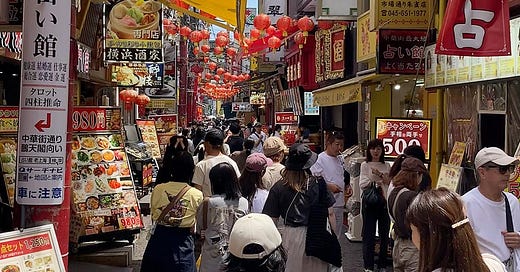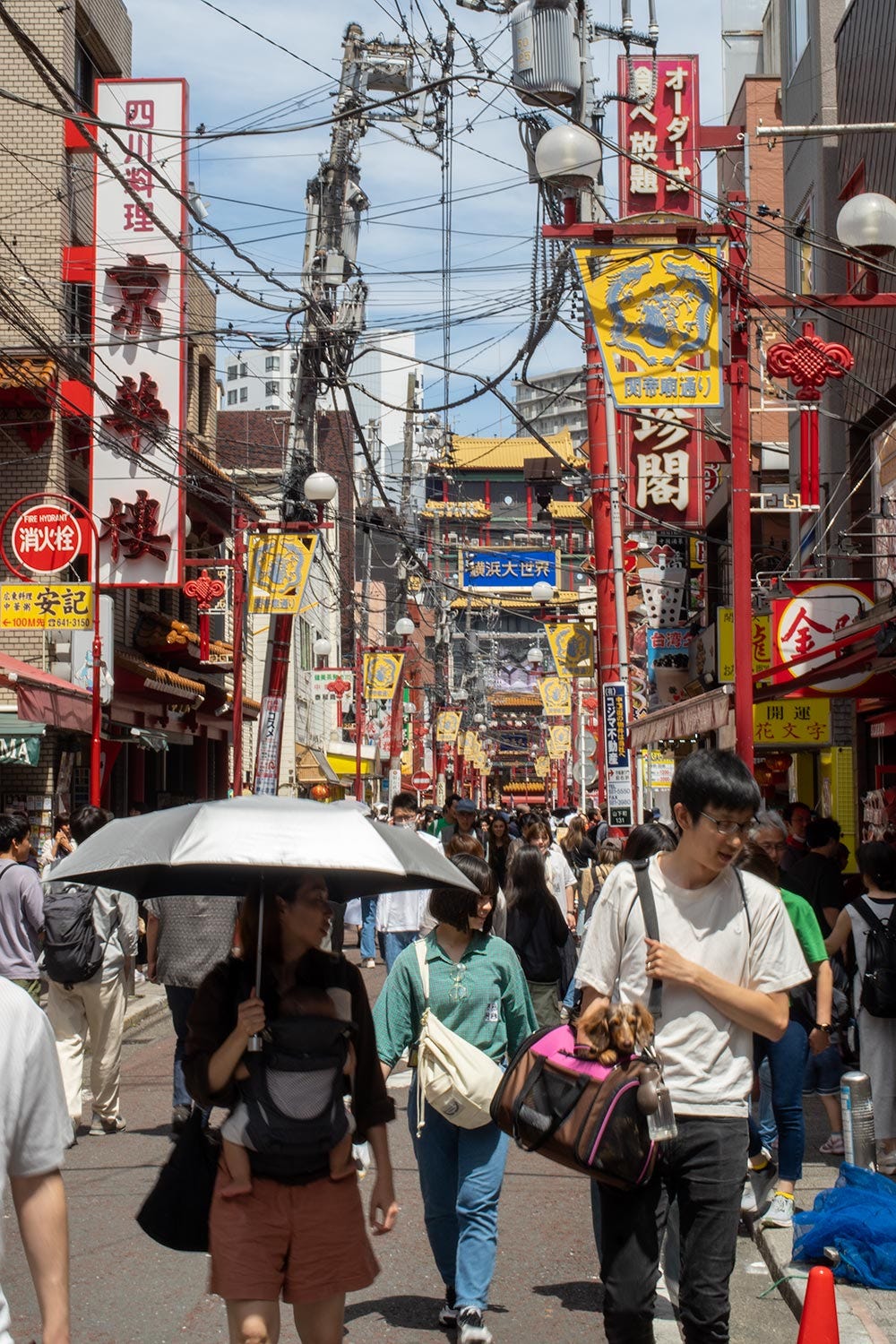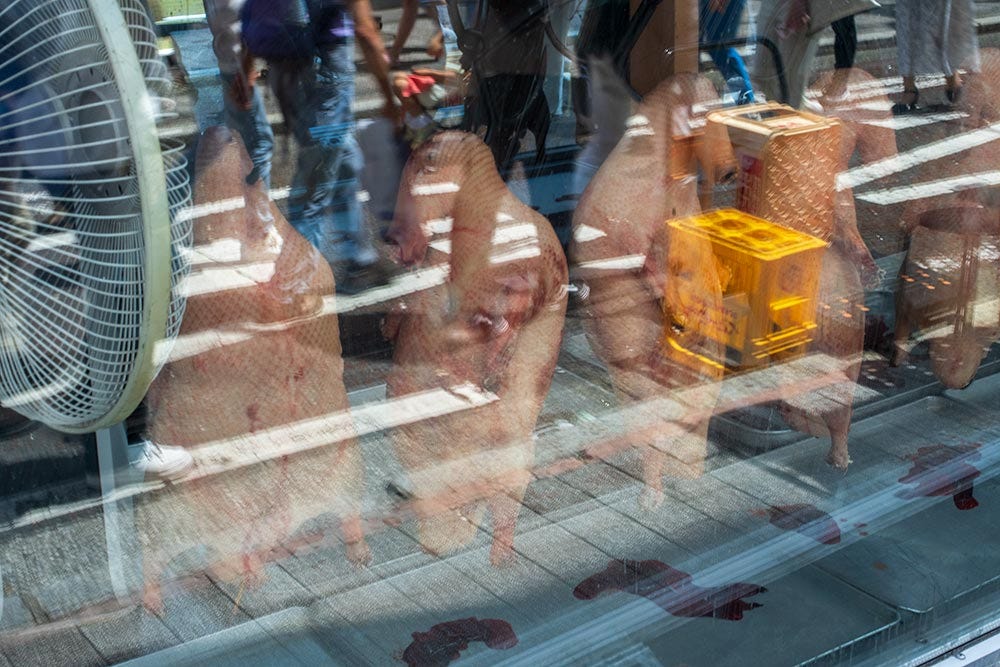Welcome to NOTEBOOK, a cultural guide to art, design and architecture, along with a resource of local news and information in English giving a realistic view of Tokyo and further afield.
06/05 – Heavy rain lashed parts of western and eastern Japan last Friday, as warm and humid air from Typhoon Mawar flowed into seasonal rain as Japan’s Meteorological Agency warned of further landslides and flooding. Japan is aiming to be at the centre of the supply chain for the next-generation of semiconductors by ramping up its investment in the technology. Meanwhile, the Irish Film Festival in Tokyo was launched last weekend at the Kadokawa Cinema in Yurakucho.
Just south of Tokyo, Yokohama Chūkagai has become one of the largest and oldest Chinatowns in Japan, alongside Nankinmachi in Kobe and Shinchi in Nagasaki. We pass through its red gates on a warm Sunday as restaurants fill and streets overflow with locals and visitors alike.
Yokohama Chukagai is one of the largest and oldest Chinatowns in Japan, alongside Nankinmachi in Kobe and Shinchi in Nagasaki.
Established in 1859, just prior to the country opening its borders to trade and commerce in 1868 and the Meiji period, Yokohama’s port served as home for Chinese immigrants arriving from Hong Kong and Guangzhou then known as Canton.
Like much of Tokyo, the Great Kanto Earthquake of 1923 devastated its vibrancy while hostilities between China and Japan later strained the relationship between Chukagai and neighbouring parts of Yokohama. Despite its fractious nature though, the area known as Chinatown was eventually recognized an official part of the city in 1955.
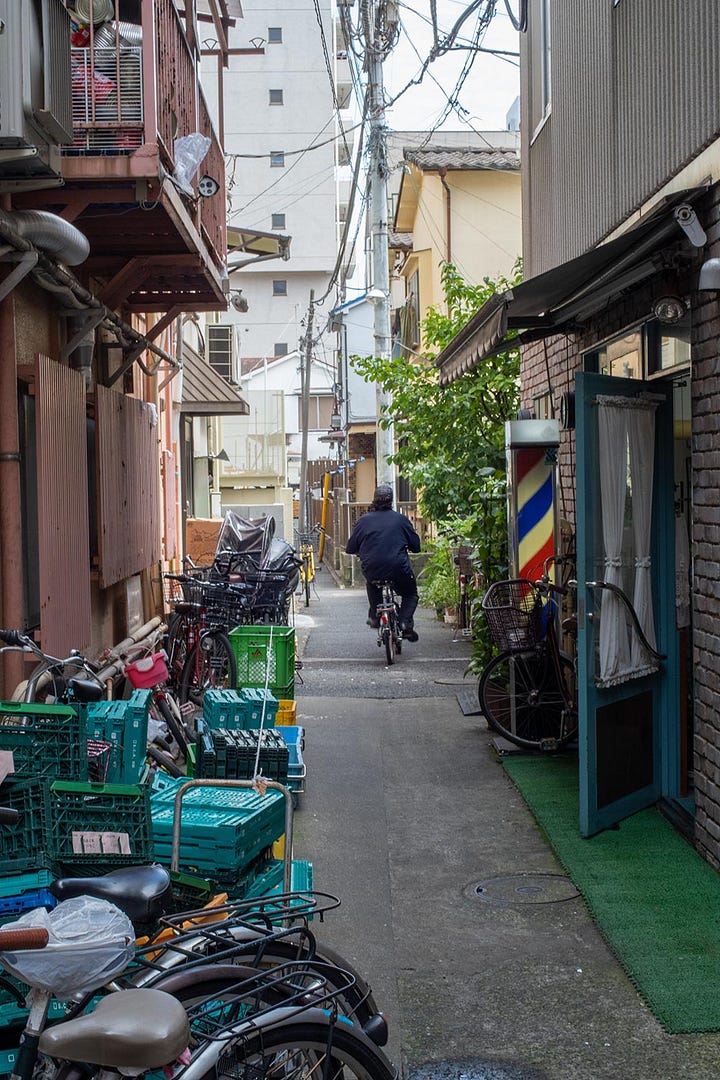
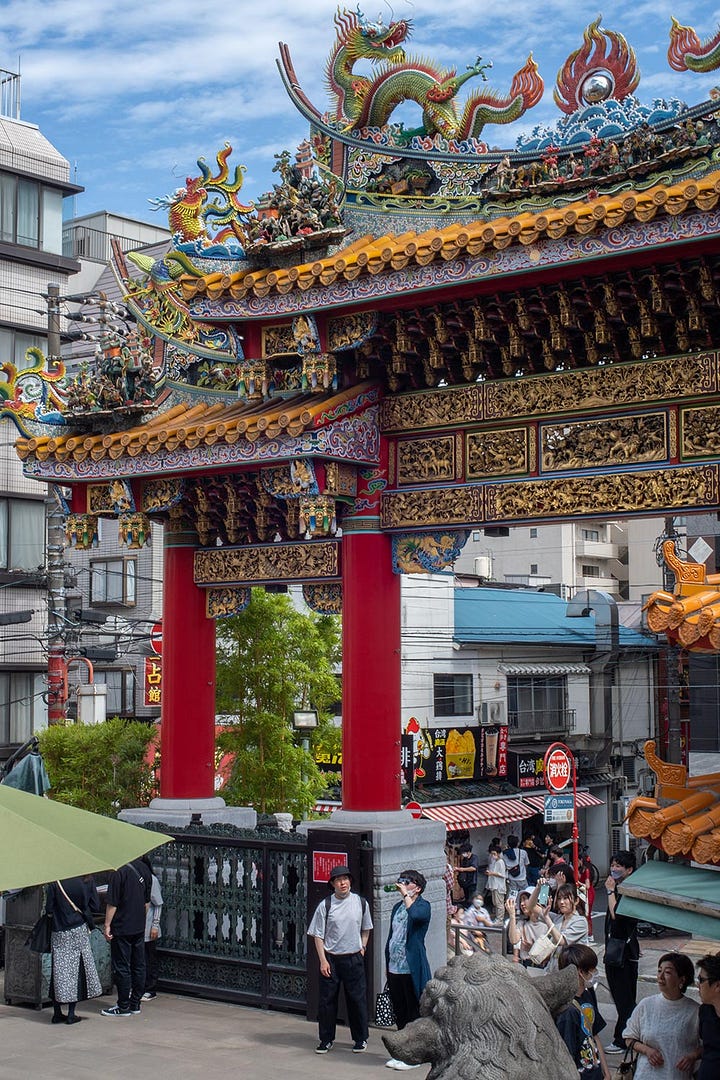
Now restaurants and souvenir shops are piled into this small quarter, all guarded by four red gates that demarcate the extent of Chukagai and form an entrance from all four corners as restaurants fill and streets overflow with locals and visitors alike.
NOTEBOOK episodes are published 3 times a week: Monday, Wednesday, and Friday. We will add things here we couldn’t fit into each episode and use this space as somewhere to answer your questions when your here or thinking of visiting Japan.
It wont necessarily be chronological: we’ll dive back into previous episodes and expand on things that wouldn’t fit — you can only record so much.
We have recently been adding field recordings from different parts of the city, and different parts of the country, while interviews give us a chance to talk with other people on the places they might recommend (or not, for that matter).
And if you have an recommendations or requests, send an email (notebook.podcast@gmail.com) or voice message (speakpipe.com/notebook). Better still, Subscribe and add a comment below. Thanks for listening, thanks for reading, and feel free to use this as your NOTEBOOK.

